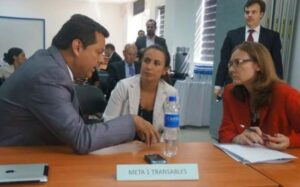Virginia’s experiment with online learning in public schools during the COVID-19 epidemic has been widely panned as a poor substitute for in-person learning. But many school superintendents, spurred by the loss of thousands of students from public schools, are thinking that online learning may be here to stay, at least in a limited capacity.
In Virginia Beach the University of Virginia K-12 Advisory Council hosted Friday about 60 senior school administrators, mostly superintendents and assistant superintendents to discuss lessons learned from the COVID-19 experience. As part of the process, the organizers white-boarded suggested topics for breakout groups to discuss. There was a widespread sentiment that the epidemic had forced administrators to re-examine established ways of doing things.
Perhaps most remarkable was the recognition that public schools need to think about their “market share” in the educational marketplace. Apparently, the loss of 3% or more of student enrollments to private schools and home schools in some districts has been a real wake-up call. The decline in enrollments translates directly into a loss of state dollars.
One set of questions asked, “How may you position your district to sustain/regain market share if it is threatened?” The school superintendents were thinking like business people worried about the competition! Here are some of the discussion points listed in the digital white board that was shared with Bacon’s Rebellion:
- “We must rethink our delivery systems to provide the same advantages to students and families that they get from homeschooling.”
- “Virtual options that are high-quality and meet students’ needs (Virtual Academy is an example) will attract students and families.”
- “Market share is also an issue from the perspective of staffing shortages. How many teachers would rather run a home schooling pod?”
What a breath of fresh air.
Another basket of questions: What parts of “normal” are worth rushing back to? Which past practices might not continue?
The superintendents agreed that face-to-face interactions between students and colleagues is still important, and also that physical schools and classrooms create a sense of community that cannot be replicated online. But, the document said, “virtual instruction is not going away.”
Administrators also have awakened to the idea that calendars and schedules can be far more flexible. The potential exists to move towards “differentiation and choices in learning environments rather than locked-in calendars.”
There was some discussion as well about how online learning can be a tool for reducing racial/ethnic inequity. Some results of online learning have been profoundly discouraging. In district after district, preliminary testing has indicated that a significant percent of young students, mostly poor and minorities, have lost ground in their reading skills. There is acknowledgement that the quality of virtual instruction has got to get better. One potential advantage of virtual learning would be to “more equitably distribute your most effective teachers.”
From my personal perspective, the most fascinating thing was to see administrators thinking of parents as customers (although that word was never used) rather than people who have to take what is given them. “Flexible learning experience is important for us to provide,” says one bullet point. “A subset of parents and students want it.”
Short-term, the COVID-19 school closings are a disaster. But they could prove to be a blessing in the longer term if they motivate substantive reform.



